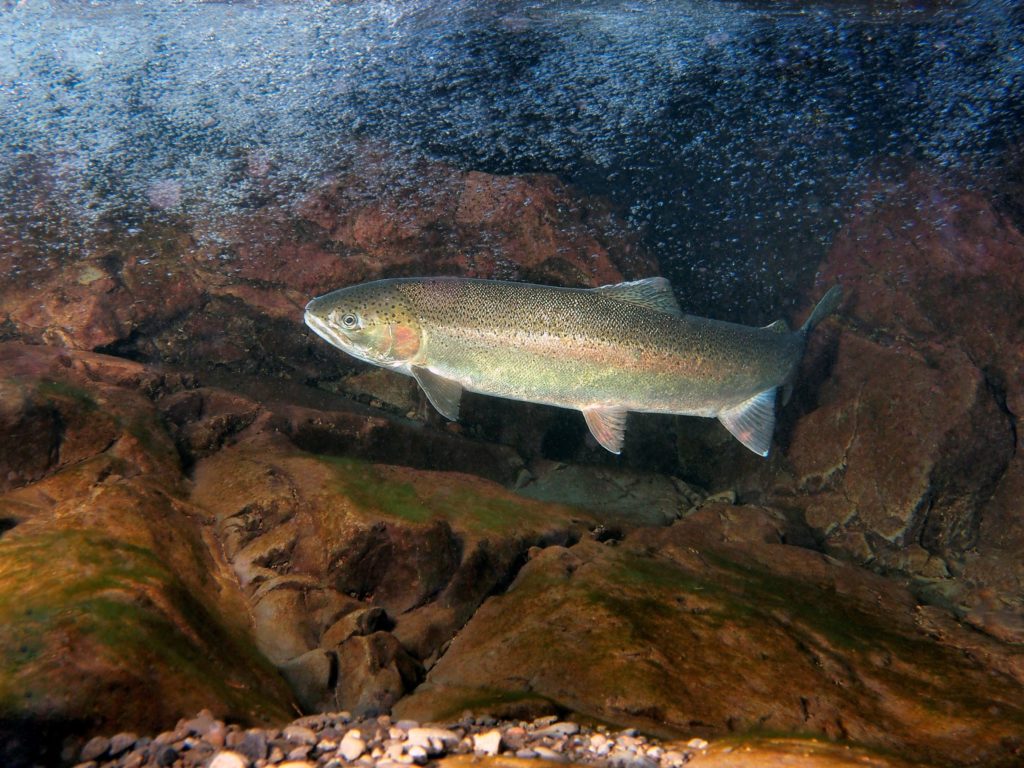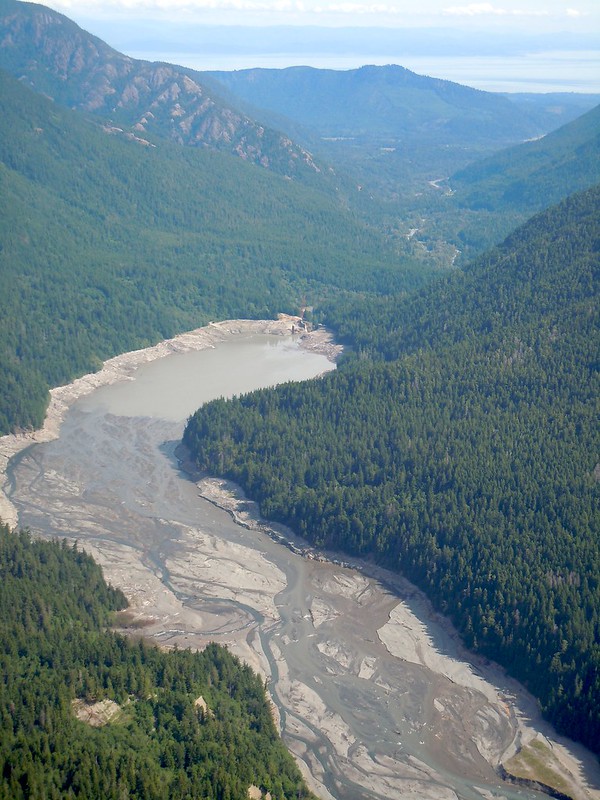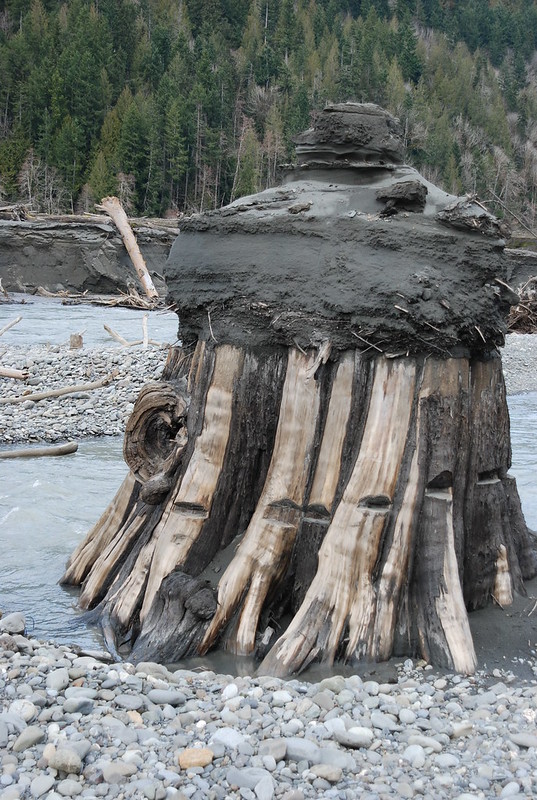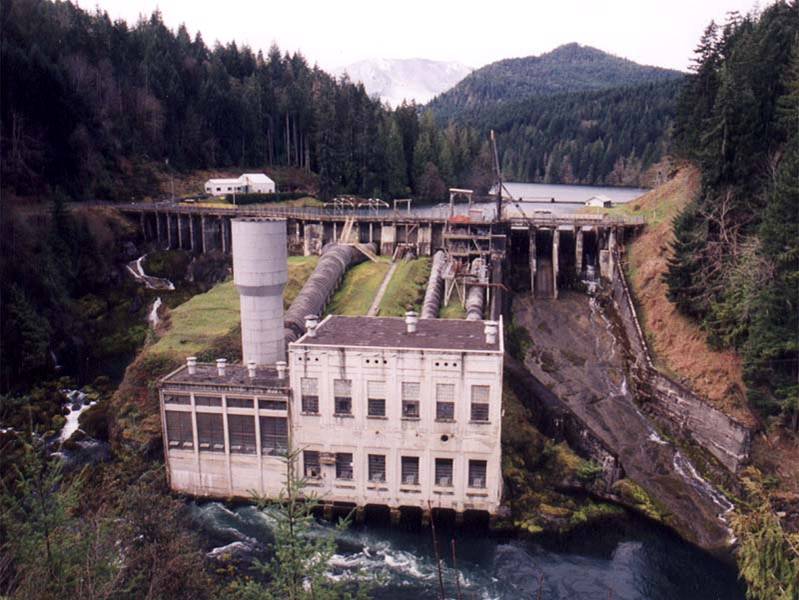New Film Highlights Elwha Summer-runs ‘Rising From The Ashes’
It was a summer somewhere in the mid- to late 1980s and my dad, sisters and I were camping along the Elwha. After we took our ganders at the dams and reservoirs, and Olympic National Park’s trees and mountains, I decided to fish the river one afternoon for trout.
The stretch above the old Altair Campground looked inviting, as well as steep, and I carefully bushwhacked and waded my way along the banks while taking casts here and there.

Tasty looking water at the head of the run pulled me further and further upstream; surely lots of rainbows lurk there, my young angler’s brain screamed.
I never found out. Just as I got to the best spot to fish the stretch, I disturbed an unseen bees nest, was swarmed and literally stumbled blindly out of there as fast as I could.
It was maybe my luckiest scrape in four-plus decades of fishing — one that might have turned me into river nutrients if I’d slipped off the narrow submerged ledge that my feet somehow followed perfectly downstream to safety.
I haven’t been back to fish the river since, and of course it is closed waters through at least July 1, 2021, now that those two dams — Elwha and Glines Canyon — have been removed.

But the rainbows remain, and what’s more, after being damlocked for over a century, they’ve reverted to their anadromous ways as if the concrete plugs had never blocked their path to the sea and back.
Rainbows and steelhead are one and the same fish, and they express themselves across a preposterously diverse spectrum of life histories — from homebodies that never leave their natal waters to those that make multiple runs to the sea and back, and everything you can imagine in between.
Those in the big, brawling Skagit have 35 different expressions; those in the tiny West and East Twin Rivers between Port Angeles and Sekiu have 18.
In the Deschutes, skulking little stay-at-home male redbands sneak into the redds to fertilize the eggs of ocean-returning females. Idaho’s famed B-runs spend two and even three years in the Pacific and fed by those marine nutrients, they grow twice as big as A-runs.
What’s particularly amazing about Elwha River summer-runs is that because the dams were (illegally) built without fish passage facilities, the stock was believed to have gone extinct, yet just a few years after removal, they’re showing a remarkable resurgence.

Last summer, survey crews counted at least 309 adult summer-runs in the 15-mile headwaters reach — more than 2018’s count for the entire river, 100 times as many as were found in all between 2009 and 2012.
And they estimate that 920 returned to the system overall in 2019, making it “now likely the largest population (of summer-runs) in Puget Sound, and along the Washington Coast.”
“They’re like the Phoenix, rising from the ashes,” says John McMillan, Trout Unlimited’s science director.
He was among those who snorkeled the river deep in the heart of the Olympics as filmmaker Shane Anderson of North Fork Studies documented it.
“Forty-three steelhead!” the surveyor relays to others during filming about the population of a single rockbound pool.
“Four-three!”
Last Friday evening Anderson’s nine-minute feature, also called Rising From the Ashes and coproduced by TU and Wild Steelheaders United, was released.
It’s a beautifully shot and edited work that highlights the latest inspiring story to come out of the Elwha — “a living laboratory,” in McMillan’s words in the film — as the river flushes built-up sediment out into the Strait of Juan de Fuca and its fish runs return and colonize ever further upstream.
Chinook, coho, pink salmon, winter steelhead — a mix of wild and hatchery stocks — and bull trout are also taking advantage of the newly available habitat.
But it’s the summers — which are completely wild — that are the focus of the film.
In Rising From the Ashes, Allyce Miller, a Lower Elwha Klallam biologist, terms them the “champion fish of Elwha restoration.”
That’s high praise but also fitting for a fish exalted as “the most extreme athletes of the steelhead” world for their ability to swim higher upstream than any other.
Genetic analysis on Elwha summers is currently underway by the National Marine Fisheries Service, but in an email McMillan says the data suggests they are mostly coming from resident rainbow populations that were trapped behind the dams.
“These fish showed up the past two years in big numbers,” he notes. “That timing aligns with the first return of smolts that we would expect from Glines Canyon Dam being fully removed in 2015/2016. Presumably, if these were mostly strays, we would have had lots of summer steelhead show up in previous years and even in years prior to the dams coming down – because the fish in the ocean don’t know the Elwha no longer has a dam, so why would they all of a sudden show up?”
While allowing that it’s possible a few did wander in from other system, McMillan also points out that Puget Sound and coastal stocks are doing so poorly these days that “there simply aren’t enough adults elsewhere to account for this large increase.”
Nor has there been a corresponding bump in winter-run numbers that might point to strays playing a strong overall role, he says.

“Another piece of data suggests the population is coming from rainbow trout. During the surveys about 80 to 85 percent of the (160) adults I counted … were female. Females should theoretically be the first fish to head to sea because they benefit more from achieving a large size than males. Larger size equals more eggs. More eggs equals higher fitness, generally,” McMillan says.
“Males on the other hand, as seen in my videos and such, can be small and still find mates. So it would make sense that more females went to sea initially than males. Over time, I would expect the population to still be mostly female, but not skewed this badly. In fact, most summer-run populations I see on the OP are about 55 to 60 percent female. All together, this suggests the population is just starting to grow and is trying to reach stability, but this is likely to take a decade or more,” he says.
In a time of depressed Washington steelhead runs, and at a moment of great uncertainty in the world, the resurgence of Elwha steelhead is a glimmer of hope.
Filmmaker Anderson (who has another feature coming out in May on upper Chehalis basin issues) called the story of the northern OlyPen salmonid stock “by far the most inspirational, magical and painful assignment I’ve done.”
“I’ve spent time on the Elwha my entire life, making this comeback story really hit home for me and giving me a tremendous amount of hope during very challenging times for our fish, rivers and environment,” he said.
Trout Unlimited’s Jonathan Stumpf says that Anderson and McMillan will be doing an Instagram Live session at 4 p.m. Friday afternoon via the Wild Steelheaders United channel.
While the removal of the two dams may have produced more dust and mud than ash, it’s the memory of a camping trip and its campfires long ago that also has me looking forward to returning to the heart of the Olympics.
I hope one day my sons and I are able to fish the Elwha for not only its legendary 100-pound Chinook but also its rejuvenated summer-run steelhead — and this time I’ll keep an eye out for bees nests guarding prime water.
